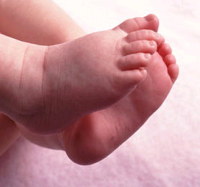
The Scientific Committee on Consumer Safety (SCCS), who is in charge of advising the European Commission on scientific matters, further addressed the issue on the safety of parabens in cosmetic products, focusing this time on the specific case of products intended for young children.
Children under three years
In a previous opinion [1], the Committee had indeed confirmed the safety of the two commonly used parabens (methyl paraben and ethyl paraben) within the limits of recommended concentrations (0.4%) and lowered to 0.19% the concentration use of butylparaben and propylparaben. If this decision had the effect of rather reassuring the industry, whose practices were already consistent with the Committee’s recommendations, the latter was criticized for not specifically addressing the case of children under three, considered more sensitive to risks linked to hormonal disruptors.
Soon after, the Danish authorities invoked the safeguard clause, arguing that butylparaben and propylparaben were to be banned in cosmetics for children under three years, a ban in force in the country since March 15. The activation of the safeguard clause by a Member State of the European Union automatically resulting in the referral of the Commission, the latter asked the CSSC to clarify its opinion in the light of the objections raised by Denmark.
Clarifications from the CSSC
In its opinion of 10 October (CSSC/1446/11), the Committee therefore recalls that its previous risk analysis of parabens was based on particularly conservative assumptions including concerning the actual exposure to parabens, and that the data now available seems to confirm that the reality of the exposure in Europe and in the United States is actually far less than the one imagined at the time. Given the safety margins adopted, the SCCS believes that parabens are not a safety issue, and this regardless of the age of users.
However the Committee noted, that in the case of leave-on products intended for application in the nappy area of children under 6 months, a risk could not be excluded, because of the risk of skin lesions in this area and because of the immaturity of the immune system at this age. However, such concerns should only arise, the Committee said, in the case the worst level of exposure is retained. Unfortunately, the Committee indicated that the currently available scientific data did permit the Committee to further refine its position on the subject.
Details provided by the SCCS strongly weaken the position of the Danish authorities, but do not provide answers to all questions. So it is now up to the Commission to decide.




























